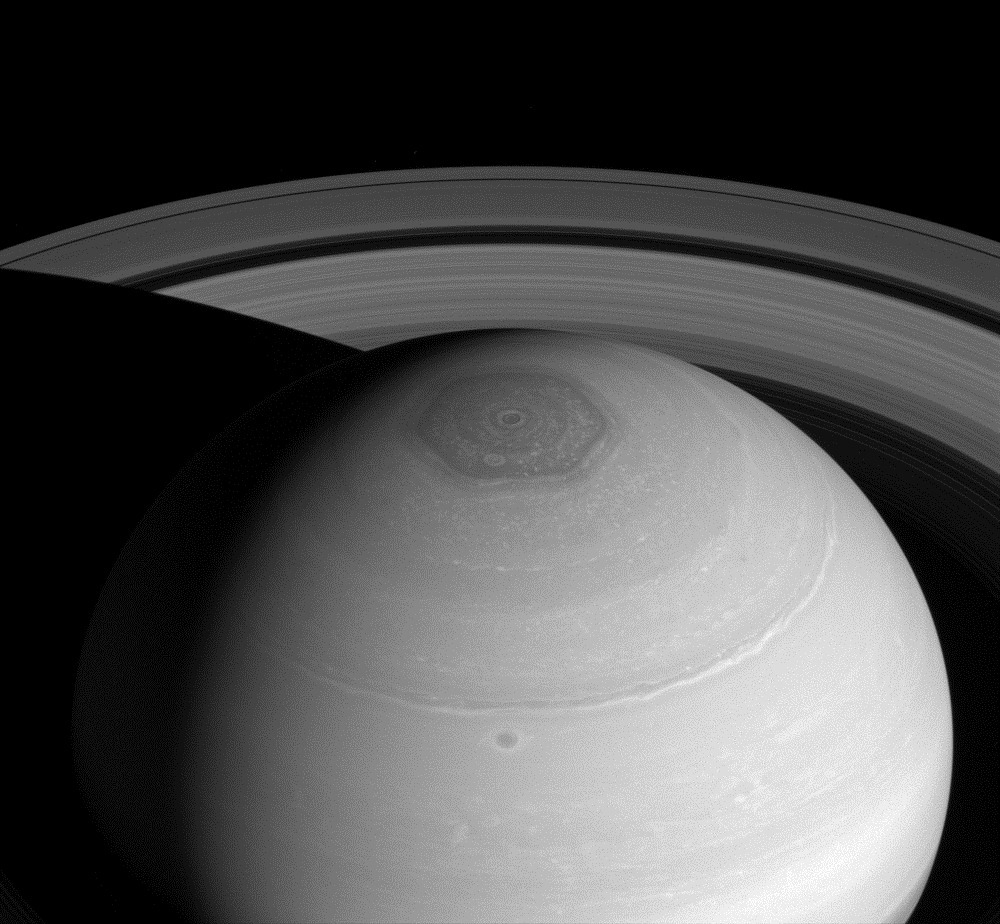Just a white, irregular and featureless patch of snow and ice.
In comparison, this is what the north pole of Mars looks like.
The carbon dioxide layer is about a meter thick.
This image is from NASAs Mars Global Surveyor.
A mosaic of the north pole of Mars captured by the Viking spacecraft.
Other planets of the solar system too have interesting looking poles.
The image was taken from an altitude of 52,000 kilometers.
Each cyclone is about a 1,000 kilometers in diameter.
Saturn is another remarkable planet.
The poles of this ringed planet are nothing like anything seen on any other planets of the solar system.
The cloud is also rotating with a period of roughly ten and half hours.
Within the hexagonal pattern a variety of cloud structures can be seen.
Swirling around the central hurricane are several smaller hurricane and vortices.
The biggest of these vortices spans about 3,500 kilometers.
The hexagon is seen only on Saturns north pole.
Saturns hexagon captured by the Cassini spacecraft.
A true color image of Saturns hexagon.
In recent years, the hexagon was also observed to change color from blue to golden.
Our final stop today will be Neptune.
It is this abundance of methane in the atmosphere that gives the planet its characteristic blue color.
On the left is the thermal image of Neptune.
The bright spot at the bottom is the warmest region.
On the right is the true color image of Neptune.
It has been summer on Neptunes southern hemisphere for the last few decades.









